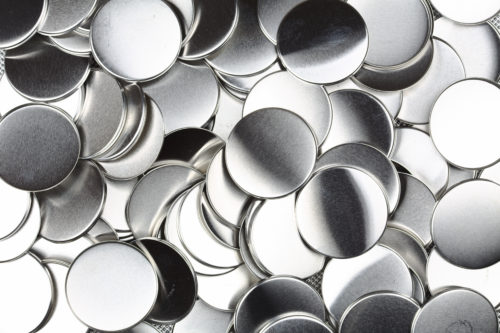Hydroforming vs. Metal Stamping
Comments Off on Hydroforming vs. Metal StampingBoth hydroforming and metal stamping are efficient metal shaping methods. However, their shaping methods are vastly different from one another and offer certain advantages depending on the application. The unique characteristics that make hydroforming ideal for one project can be the very things that make metal stamping the better choice for another project, making it very important to understand the differences between the two methods.
If you’re deciding between hydroforming and metal stamping for your next project, here are some considerations to keep in mind.
Hydroforming
Hydroforming uses high-pressure fluids to form metal parts made from ductile materials, such as stainless steel, carbon steel, copper, or aluminum into specific shapes. These fluids enable hydroforming to produce intricate shapes that other methods cannot and is ideal for applications that require the creation of asymmetrical, complex, or long and shallow components.
Hydroforming’s broad design freedom, high material utilization, reduced part weight, high mechanical strength, and improved dimensional accuracy contributes to its popularity as the chosen manufacturing method for many industries such as automotive, lighting, and appliance industries.
The Hydroforming Process includes the following steps:
- A round disk of metal is first placed over a pre-designed molding tool—either a mechanically driven mandrel or solid female die.
- Hydraulic fluid is pumped at high pressure into a chamber sealed by a strong, flexible rubber diaphragm.
- The hydraulic fluids place pressure on the diaphragm to counter the force of the mandrel to facilitate deep drawing applications. Alternatively, the pressure can be used to force the metal into the female mold to produce shallow convex and concave shapes.
- Pressure is released from the forming chamber.
- The punch is retracted.
- The formed part is removed.
Advantages of Hydroforming
- One comprehensive tool: No mating part is needed and modifications are much simpler, which reduces tooling costs.
- Reduced weight: Because hydroforming is not a subtractive process, thinner materials can be used for the blank, resulting in a lighter end product.
- Minimal to no waste: The material can be precut before entering the hydraulic press, reducing waste.
- Reduced spring back: Increased strength obtained from hydroforming is especially helpful in reducing spring back in closed sections, such as a can or cup.
- Few abrasions: Working with high-pressure fluid, rather than compression, means fewer abrasions.
- Smooth finishes: Hydroforming produces beautifully smooth finishes that require little to no secondary processing.
Metal Stamping
Metal stamping uses pre-formed dies to compress metal sheets and round disks into the desired shape. This process is often chosen for both high-volume and short-run productions due to its low-cost, high-speed process that can produce a high volume of identical metal components. Metal stamping is a traditional technique known for its outstanding repeatability and is ideal for simple components. The Metal Stamping process can leave scoring on the final product making it ideal for products that don’t need a presentable finish without touchups. 
The Metal Stamping process includes the following steps:
- Dies and tools are chosen depending on the project.
- Selected tools are attached to the press.
- A flat metal sheet is then manually or automatically fed between the tool and the press.
- The press then compresses the sheet metal against the tool, which forces the metal into the desired shape.
- The formed part is removed.
Advantages of Metal Stamping:
- Consistent, accurate, & repeatable: Once a die is designed, it can produce identical components indefinitely, yielding repeatable accuracy.
- Higher quality components: Consistent, repeatable processes yield high-quality components.
- Cost-efficient: Dies can be affordable tooling options, and the ability to produce high volumes of product quickly makes metal stamping a cost-efficient option.
- Timely: Metal stamping offers high-speed production without sacrificing quality, delivering product gets to market more quickly.
- Exceptional precision: For short-run metal stamping, the inside of a part can be kept within +/- .02-.03 inch of its die.
Hydroforming & Metal Stamping from Metal Craft S&S
Whether hydroforming or metal stamping is the best choice for your project, Metal Craft is committed to quality in both our metal fabrication processes and our customer service. From one-off metal components to a full production run, our knowledge, experience, and extensive equipment resources mean we can provide you with superior metal component forming solutions.
Our commitment to quality, on-time delivery, and personalized customer service began four generations ago and continues today. Contact us or request a quote online for additional information about our hydroforming and metal stamping capabilities and to experience our world-class customer service.


